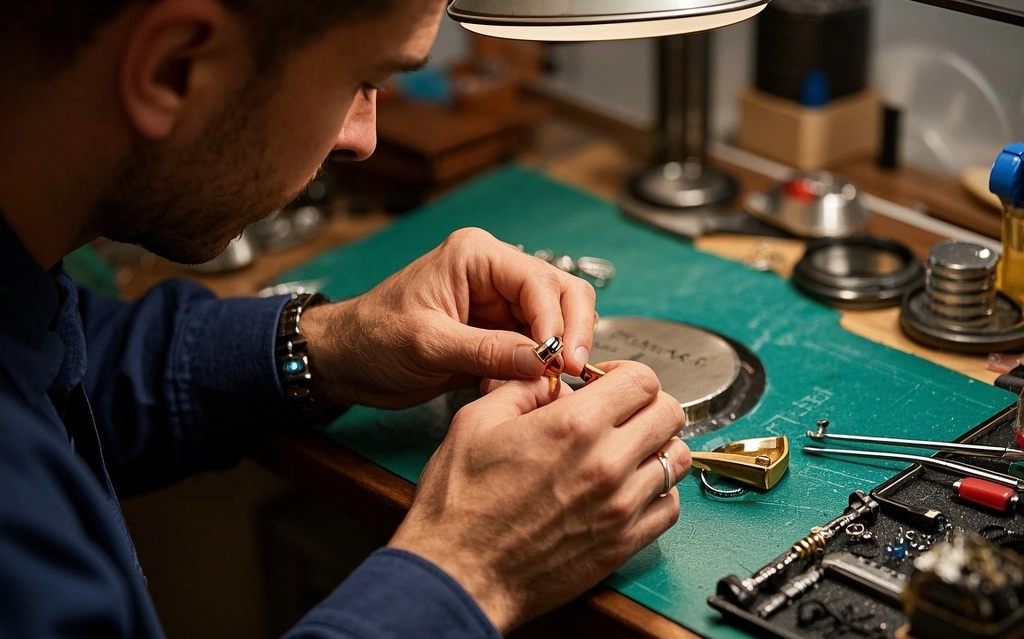In the global jewelry market, custom lab-grown diamond jewelry has become an increasingly popular choice for brands, wholesalers, and retailers. Compared to natural diamonds, lab-grown diamonds are more affordable, environmentally friendly, and align with sustainability trends, making them a preferred option for B2B buyers.
How can businesses efficiently and accurately purchase custom lab-grown diamond jewelry? This article will provide a detailed breakdown of the B2B purchasing process to help businesses optimize their supply chain and improve purchasing efficiency.
1. Defining Purchasing Needs: Product Positioning & Target Market
Before sourcing custom lab-grown diamond jewelry, B2B buyers should clarify the following key factors:
✅ Target Market: Are you targeting North America, Europe, the Middle East, or other regions? Consumer preferences vary—North America favors minimalist designs, while Middle Eastern markets prefer luxurious styles.
✅ Product Category: Are you sourcing 、rings, earrings, necklaces, bracelets, or full jewelry collections?
✅ Diamond Specifications: Determine key parameters such as carat weight, color, clarity, and cut to meet market demands. For example, Western markets often prefer diamonds above 1 carat, while Asian consumers lean toward 0.5-carat diamonds for affordability.
✅ Customization Requirements: Do you require branding, engraving, exclusive designs, or OEM/ODM services?
Once these factors are defined, businesses can efficiently narrow down suitable suppliers.
2. Finding the Right Supplier: Manufacturer vs. Wholesaler
Selecting the right supplier is the most critical step in B2B procurement. The market offers two main types of suppliers:
Manufacturers: Own production facilities, provide OEM/ODM services, and offer lower costs, though they may require higher minimum order quantities (MOQs).
Wholesalers/Distributors: Work with multiple factories, offer flexible small-batch purchases, making them ideal for market testing or quick restocking. However, prices may be slightly higher.
How to Find Reliable Suppliers?
Google Search: Use keywords like “Lab Grown Diamond Jewelry Manufacturer” or “OEM Lab Diamond Rings” to find reputable suppliers.
B2B Platforms: Websites such as Alibaba, Global Sources, and Made-in-China offer supplier listings.
Trade Shows: Events like the Hong Kong International Jewellery Show, JCK Las Vegas, and Baselworld allow direct supplier connections.
Factory Visits: If ordering in bulk, visiting the factory helps verify production capabilities and quality control.
3. Confirming Design & Production Timeline
Choose Existing Designs or Submit Custom Designs
B2B buyers can either:
Provide their own CAD files or 3D modelsfor custom production.
Modify existing supplier designsby adjusting settings, stone sizes, or metal types.
Determine Materials & Craftsmanship
Metal Choices: Options include 18K gold, 14K gold, and platinum (PT950).
Diamond Setting Styles: Choices such as prong setting, bezel setting, and pave setting affect aesthetics and durability.
Finishing Touches: Polishing, rhodium plating, rose gold coating, and logo engraving.
Sample Approval & Mass Production
Suppliers typically produce a sample (prototype)for buyer approval within 7-15 days. Once approved, bulk production begins, typically taking 2-6 weeksdepending on order complexity.
4. Quality Inspection & Certification
After production, thorough quality checks are essential to meet market standards. Key inspection aspects include:
✔ Diamond Quality Check: Ensuring compliance with IGI, GIA, or other certification standards.
✔ Stone Setting Strength: Ensuring secure settings to avoid loose diamonds.
✔ Metal Purity Check: Verifying gold or platinum content meets international standards (SGS certification).
✔ Branding & Packaging: Ensuring compliance with custom branding and packaging specifications.
Independent third-party organizations like SGS, BV, and Intertek can provide inspection reports to verify quality.
5. Logistics & Shipping: Choosing the Right Delivery Method
Based on order size and delivery deadlines, buyers can select from various shipping options:
Express Shipping: Ideal for small orders via DHL, FedEx, or UPS, with delivery in 3-7 days.
Ocean Freight: Best for bulk orders, cost-effective but takes 15-45 days.
✈ Air Freight: Faster than sea freight but more expensive, suitable for urgent shipments.
Buyers must coordinate with suppliers on customs duties, insurance, and required shipping documents to ensure a smooth import process.
6. Payment Methods & Supply Chain Optimization
Common B2B payment methods include:
T/T (Telegraphic Transfer): Often 30% deposit, 70% balance upon shipment.
Letter of Credit (L/C): Ideal for large transactions with added security.
PayPal/Western Union: Best for small transactions or sample purchases.
For long-term partnerships, buyers can negotiate flexible payment terms (such as net 30/60/90 days) to optimize cash flow.
Conclusion: How to Improve Procurement Efficiency?
✅ Choose Reliable Suppliers: Prioritize certified, experienced manufacturers.
✅ Streamline Customization: Clearly define designs, materials, and craftsmanship.
✅ Ensure Strict Quality Control: Avoid defects and enhance customer satisfaction.
✅ Optimize Logistics: Select cost-effective shipping based on order size.
✅ Negotiate Payment Terms: Strengthen supplier relationships for better deals.
By optimizing the B2B purchasing process for custom lab-grown diamond jewelry, businesses can enhance market competitiveness and meet the growing demand for personalized, high-quality jewelry!
Looking for a trusted supplier for custom lab-grown diamond jewelry? Contact us today!

